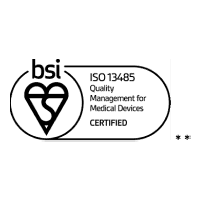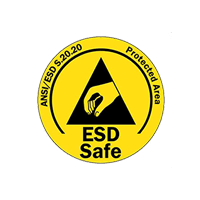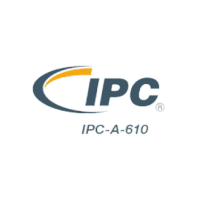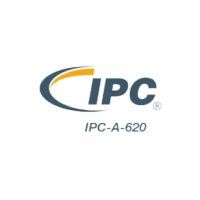Industrial Design that Elevates Customer Experiences
Featured Industrial Design & Development Services
We use a variety of tools to cultivate innovation, including competitive and strategic analysis, IP consideration feature evaluation, targeted user scenarios, role playing, concept studies, manufacturing strategy, and other techniques. By identifying user needs, opportunities, and challenges at the early stages of a projects, we can save time and expense while producing better results.
Vantage MedTech uses observational research, often with photo or video recording, to understand user needs. This includes ethnographic research supplemented by online qualitative and quantitative methods, interviews, surveys, or secondary research. Usability testing, meeting regulations, ensures safe and effective device use.
Vantage MedTech relies on a variety of tools and methodologies to advance the industrial design of a device towards completion; sketches and study models to explore a range of concepts, then CAD models, photo-renderings, and 3D-printed prototypes to refine the design. At each stage these assets provide a means for user testing and market feedback.
We adopt a comprehensive approach to user experience (UX) design, encompassing the entire device interaction. By combining usability with captivating visual design, we craft a well-rounded user experience that also boosts brand recognition. As medical device technology advances in complexity, we offer intuitive and easily learnable interfaces that minimize user error.
To close the design development loop, we always recommend building ergonomic models and prototypes for human factors testing to evaluate the safety, usability, and comfort of the device. This process involves building high fidelity prototypes and observing users interact with the product, while also obtaining direct input from users on ways to improve usability. This can be an iterative process, with several rounds of prototypes required to resolve challenging usability issues.
Case Studies
Patient Fluid Pumping System

Transform Your Vision into Reality with Vantage MedTech's Industrial Design Expertise!
Experience holistic design at Vantage MedTech: concept exploration, user research, and human factors converge for products that excel in functionality and user satisfaction.
Rely on partners who can adapt to your needs, wherever you are in your journey
Our depth of expertise in specific clinical segments is strengthened by our dedicated team, refined processes, and specialized portfolio and proprietary platforms.
Reduce execution risk by working with a medical device software company known for over 1,600 medical devices successfully delivered.
Leverage our proprietary platform architecture and reduce development timelines by up to 60%.
Our in-house team of specialized engineers will bring your medical device from concept to reality with precision and care.












Vantage MedTech is proud to be recognized for our certified excellence in medtech innovation and manufacturing.
* Held by RBC Medical Innovations
** Held by Sterling Medical Devices
Frequently Asked Questions
Why is Industrial Design Important for a Medical Device?
Every medical device is the result of a design and engineering problem-solving process during which hundreds of decisions are made about a product’s size, shape, configuration, user interface, color, finish and material.
Industrial designers create the look and plan the function of a new medical device based on a set of design requirements. Through a carefully considered design process they balance usability, functionality, and aesthetics resulting in a device that is a pleasure to use, delights the user visually, and rewards them emotionally. So Industrial Design strives to affect the whole user experience of a product, device, or service in the most positive way – industrial design is the means and user experience is the outcome.
What is User Experience (UX)?
At its core industrial design and user experience design are one and the same: User experience design encompasses the entire product experience, from unpacking and setting up the device, reading the instruction manual, operating the controls, and yes, also interacting with the UI – if it has one. At Vantage, we embrace a holistic view of UX design which our industrial designers strive for: designing the best possible user experience.
UX Design encompasses Usability, Look, and Feel:
- Usability is arguably the most important aspect. It encompasses Learnability, Efficiency, Memorability, Effectiveness, and Error Prevention.
- Look has everything to do with appearance of the product which includes, shape, configuration, buttons, fonts, icons, colors, animations, material, surface finish and material.
- Feel has to do with how the look and usability delight the user on an emotional level by providing satisfaction, the feeling of value, credibility, engagement, and enjoyment.
What Does Good Usability Mean for a Medical Device?
Usability is defined by the ISO (IEC 62366 – 1:2015) as a:
“Characteristic of the user interface that facilitates use and thereby establishes effectiveness, efficiency, and user satisfaction in the intended use environment”.
In other words, a medical device user must be able to operate their device in the safest and most effective way. With medical device technology becoming ever more sophisticated and complex, it’s imperative to develop devices that are easy to use and score high on usability. Usability or human factors testing implemented in accordance with regulations ensures a medical device can be used safely and effectively. Usability can be assessed on 5 major factors:
- Learnability: how easy is it for first-time users to accomplish the most basic tasks? Can the device interface be grasped quickly? Does it behave consistently enough to be predictable?
- Efficiency: Once users learn how to use a device, how quickly can they become proficient in using the device? How quickly can they perform the tasks they need to accomplish? Is the path to task completion obvious and free of distraction?
- Memorability: how easy can a user re-establish proficiency after not using the device for a period of time. Is it easy to recount how it works? (training decay)
- Effectiveness: how effective is the user with the device and what value does it bring? Would they recommend the interface to another user?
- Error prevention: how many errors, how often are they made, how severe are they, and how easy is it to recover? Are error messages clear? Are the errors severely impacting workflow?
To avoid major redesigns late in the development process, usability planning should start early in the design process and usability assessed at regular intervals to help shape the design of the device.
Who is Responsible for Usability?
Developing a successful medical device is definitely a team effort; the usability engineering process is a collaborative process that involves close teamwork between various disciplines, especially those that are responsible for the device’s actual operation. Stakeholders must work together to overcome user or use-related challenges and find design solutions that create the best possible user experience.
Usability planning should include a team comprised of human factors engineers, quality and design engineers, industrial designers, and regulatory and clinical stakeholders. It's essential to have a well-rounded team that can cover all aspects to ensure that your medical device is safe, effective, and user-friendly.
What is the First Step in the Design of a Medical Device?
Before embarking on development of a medical device, there are some important factors to consider:
where the device will be used (surgical suite, clinic, home), and who are the device users? Users could include anyone that interacts with the device: patients, doctors, nurses, technicians or a combination of different “voices”.
Next, it’s imperative to gain a thorough understanding of the tasks and goals users are looking to achieve using the device – the user needs. User needs define what a product should do and how it functions. User needs are established through primary and secondary research which can include user interviews – also known as Voice of the Customer (VoC), contextual inquiry (observational research), experience with a predicate device, expert reviews, and scientific articles.
Contextual inquiry is a particularly powerful tool for uncovering device deficiencies, because oftentimes device users may not verbalize a shortcoming due to familiarity, but it can be discovered when a device is observed in use. Defining user needs early in the design process will put a focus on usability for important features which may be overlooked while solving technical challenges in development.